
If you’ve read any good horror anthologies over the last few years, chances are you’ve read some of British author Phil Sloman’s work. The man’s more prolific than jack-o’ lanterns are at Halloween. Known predominantly for his short stories (at the moment at least), Sloman has become a veritable master at producing unsettling tales of terror that often deal with a slipping state of sanity.
With an impressive number of tales soon to be published, as well as a few other pieces currently in the pipeline, what better time to catch up with the man behind the words, to find out where he gets his terrifying ideas from, how he approaches his writing, and what his thoughts on the current world of horror.
Possibly one of the most thorough and in-depth interviews to appear on DLS Reviews to date, here’s what the master scribbler of slipping sanity has to say…



What first got you into writing, and why choose horror as your genre of choice (which your work definitely leans towards, although it’s not always fully immersed within)?
PS – It’s a pleasure to be here, Chris. Thanks for having me over.
So, what first got me into writing and specifically horror? I guess I’ve always loved words and had books on the go all the time for as long as I can remember. Plus English was one of my favourite lessons which meant plenty of opportunity to write as I was growing up. So I guess originally it was something I loved to play around at yet somewhere in my late teens/early twenties I gave up on it simply due to lack of confidence in what I was doing. I got the bug back again in my thirties when my mate Dion asked me to be part of a book podcast he was setting up. In doing that I discovered the world of the indie press and decided to have a stab at writing which was probably about 8 years or so ago.
Why horror? There’s a bit of a journey here and I’m not sure how much I’ve remembered properly. I suppose it was a general morphing of things as I grew up especially as that was in the 80s when public service adverts could be classed as horror shorts! You know, those ones with Charlie the cat and ‘Charlie says don’t run across the road, etc’ or the ones where kids always seemed to be getting caught halfway up electricity pylons in power sub-stations retrieving a Frisbee. Anyway, reading wise I started off with fantasy books, the usual Tolkien fare alongside Dragonlance, Feist, Moorcock, etc and then got into science fiction a bit with Asimov and other writers most of it pulp. I liked the idea of these fantastical worlds probably as an escape from reality. Then one day at secondary school my mate Phil started talking about writing a horror script. He had older brothers so had watched all the classic 80s horror whereas I hadn’t watched anything much more gruesome than Gremlins which is the greatest Christmas film of all time by the way. Anyway, this got my mind playing around with certain horror ideas and there was this great freedom with what you could do. So I guess it spawned partly from there and that’s definitely when I started getting into the likes of King, Barker and Poe. Though there is perhaps a bit of blurring as I remember watching the old BBC ghost stories for Christmas on Christmas Eve and I loved them but not sure if that came before or after the horror script thing. They were so eerie and haunting plus I ended up with nightmares from The Signalman and that creepy faceless entity! I have the box set at home now. Plus, as well as those public service adverts, if you take a look back at the kids programming from the 80s you’ll see plenty of horror tropes coming through. There was this one show on the BBC called The Children of Green Knowe with this creepy tree which came to life and stalked the kid in the show on a dark windy night. Now we lived along a country lane with woods on either side and our nearest neighbour a mile away so that screwed me up good and proper when I had to walk back from school in the dark winter nights.
DLS – How are you finding the horror scene and community at the moment, and in particular, what has your experience been like making your name within it? I hear it can be tough when you first start out to get the balance right with self-promotion and being a part of the community.
PS – I’ve been really lucky with the horror community as I’ve made some great friends and met some amazing people who all have a love of horror. Some of the nicest folks you could meet who really come through when you need them. So I tend to find the horror community a fun and welcoming one. Sure, there are flare ups now and again but I’ve been fortunate to avoid those and they tend to be in the minority like in any community. In terms of the horror scene, I think we’re in a bit of a golden era for writing. There is some really amazing stuff coming out both in the indie press and the mainstream which is fantastic to see. Yet it worries me that I go into a Waterstones or other mainstream bookstore and the horror sections are dwindling. I was in Forbidden Planet in London recently and their horror books section has halved yet again to almost nothing which I find really sad given I would expect that to be one of the stores championing the written aspect of the genre though there are plenty of film/TV horror stuff there and Pop Vinyl figures!
In terms of making my name, I’m still trying to do that and having the opportunity to speak with top folks like yourself is a great help. So I always make time to do interviews and promote the work that I am involved with but, as you’ve noted, getting the balance right is important. You don’t want to be the person who is constantly yelling ‘buy my book!’. So I go to conventions and events but for me those become more about having drinks with mates and listening to what publishers and other writers have to say on the panels there and sometimes giving my own views on things. I’ve a long way to go yet and feel I’ve a lot to learn. What I have found is that people are very supportive and that’s brilliant.
DLS – You’re a very active presence in both the online and offline horror community, often showing support for fellow indie writers, attending conventions and keeping a consistent presence on social media and similar forums. Is this something that you think is important to maintain, is it a conscious activity you need to keep reminding yourself to keep on top of, and do you find it perhaps swallows up too much of your precious writing time?
PS – The online world is a bizarre one because it can look like you’re quite present but in the time of writing something you can have been making dinner, travelling, waiting for a mate, etc so I’d say the time I’m online is time I wouldn’t be writing anyway. I just like seeing what my mates are up to and, given that most are spread across the country, social media makes that easier to do but it doesn’t beat meeting up in person. It’s also a great way to let people know what you’re up to but, in terms of books sales, there’s not necessarily (or not for me –I am sure others have cracked this) a natural correlation between how much things are shared and how much you sell. For example, an interview I did elsewhere had a reach into the thousands but the sales it generated could have been counted on one hand.
In terms of promoting other writers, I think it’s always good to give people a nod if you like their work. Share the love around. And why wouldn’t you? I love reading so it only seems right to let other people know what I’ve liked as there’s every chance they’ll discover a new favourite author.
Is maintaining an active online presence important? I’m not sure. I suspect not but I also think it doesn’t hurt unless you have some major blow-up. There are hugely successful writers out there who I’m not sure even have social media accounts so that probably tells you something. Equally, I’ve been involved with projects I’d never have been linked with if it hadn’t been for having joined up with someone online.
DLS – A recurring theme within the vast majority of your stories (although maybe not so much in your latter stories) is mental illness, psychological instability or indeed full-blown insanity. Is there a particular reason why you’ve latched on to this subject matter in particular?
PS – The subject fascinates me and at the same time I also think of it as a bit of personal self-examination. I struggle with the world a lot and, like many, have experienced extremely low points in my life. I’m just very good at smiling so it’s easy to fake a more balanced mental state. Without this becoming a counselling session, I think there’s possibly something a little cathartic for me to write this stuff but, also, at the same time it might not be the healthiest thing to be doing! Go figure.
Plus they tend to be the books I like to read, the ones where there is ambiguity to the character, where they’re struggling with themselves as much as they are the world around them. It feels real to me rather than the super strong characters who seem able to walk through a whole book of death and destruction as if it were a stroll in the park on a Sunday.
DLS – If it’s not a loss or deterioration of sanity, then it’s often something else that’s playing havoc with your characters’ minds. Are you conscious of how almost all of your stories incorporate a corruption of the mind in some form or other? Why do you think this is?
PS – Only as I had more work published! I don’t think I initially put it together that I had a go to trick for my writing. Then I started to look back and realised that there’s this beat to a lot of my stories: things seem fine, things get a bit worse, things end quite bleakly but generally with something within the main character. Perversely I think this is because I don’t know how to write a happy ending. It feels trite to me, as if everything was tied off really nicely and all was good with the world.
DLS – Did you find it challenging exploring such a potentially delicate subject as mental illness?
PS – I always worry about writing something clichéd which explains the reveal as ‘but of course they were mad!’ Our mental state is so complex and some people have good mental health and others have poor mental health and those positions are always in a state of flux. Obviously in my stories things are exaggerated but I want to write something which feels authentic and doesn’t denigrate mental health into the pot of the Victorian style asylums.
I do think we need to talk about mental health more and I’m glad to see that it is becoming less of a taboo subject. The world is becoming so ridiculously fast-paced as we are catapulted from one headline to another alongside the pressures of our daily lives. And there seems to be a lot of talking and not listening happening where everyone is keen to shout their opinion the loudest and I’m certainly not innocent of that myself. So we can get lost of this mire of angst and aggression and sometimes miss the kindness of the world. Perhaps I should re-evaluate things and write more about that and seek out the happy ending then!
DLS – Your style thus far does seem to fall very much in the quarter of dark psychological horror. Do you have any thoughts or plans to venture further outside of this particular niche? If so, what genres or subgenres would you particularly interested in giving the Sloman treatment?
PS – I think my writing would lend itself to crime but I would still want to keep the psychological element. I sometimes wonder if I should have badged my novella Becoming David as a psychological thriller rather than horror but I’m not sure if it had enough of the right elements to do so. In terms of plans to write outside psychological horror, nothing currently but it is something I will be looking to explore in the future.
DLS – You seem most at home writing short stories. Is there a particular reason for this? Do you have any plans for any full length novels (your longest offering to date being novella length)?
PS – Mainly time is the reason though there are plenty of people who are time poor who’ve written fantastic novels. I guess there is something about the limited time it takes to pull together a short story until you are in a position where you have this fully crafted piece there in front of you. It’s a quicker way to getting the buzz of saying ‘I made that’ though that doesn’t mean I rush at it either. There’s also something for me in exploring ideas and themes which the short form allows. I like puzzles and solving things. Always have done, even as a kid. With shorts, a lot of the time I start off with a ‘what if’ and from there it evolves into the wider story. I’m not saying you can’t do that with longer pieces it just takes a lot more planning or for me anyway.
In terms of longer pieces, I am very conscious that I’ll only get so far as a writer just writing short stories. If I want to strive to be a full time writer, and I very much do, then I very much believe that novels have to be the way to go. That’s what sits on the shelves in the major bookstores, alongside the celebrity biographies and all the cookbooks, so it’s really a question of looking at what is selling. Maybe I should hone my skills with a frying pan!
DLS – The setting for your stories often forms a vital role in the unfolding tale. Over the years you’ve utilised a variety of different, often extreme backdrops for your stories: from the Sahara desert, to the Amazon rainforest, to some point in the not-too-distant fucked-up future. How important would you say the backdrop for your stories is and do you put a lot of planning and thought into the setting for your stories?
PS – More often than not the backdrop is window dressing but important window dressing. I try to use my characters to drive the stories and the situations they find themselves in. The setting then presents itself as the most natural one for the story to take place in though there is always an exception to the rule, one where a location may become the inspiration for the tale. I do try to make sure that setting is then authentic. For ‘And The Desert Cried Tears’ I spent a good while googling which countries the Sahara desert crossed, which were the local tribes, the way nomadic people in those tribes lived, what food they ate, how they dressed and there’s barely a tenth of that research which will have gone onto the page. But it was all there in the background so the reader, hopefully, didn’t question the authenticity. And I like to mix things up with my story locations for my own peace of mind if nothing
DLS – Following a number of pieces of flash fiction, I understand your first full-length short story was ‘The Banshee’s Egg’ which was included within the ‘Potatoes’ (2014) anthology. Did you find it tough coming up with the idea for a horror story based around a potato of all things (as the anthology dictated)? And why did you choose to give your tale a setting stooped in Scottish history (which I must add you absolutely nailed)?
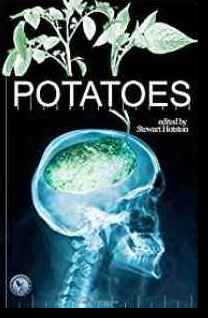 PS – Thanks for saying I nailed the Scottish history part. My wife is from over the border and would lynch me if I’d failed to do so!
PS – Thanks for saying I nailed the Scottish history part. My wife is from over the border and would lynch me if I’d failed to do so!Having a potato themed anthology to pitch to was an interesting one. I think I came across it on Facebook when Theresa Derwin was promoting the idea and then I bumped in Allen Ashley at a British Fantasy Society event where we got to talking about it briefly which resolved me to putting something forward. The nice thing about having the theme of a potato is it challenges you as a writer to come up with something for people which works. For the previous year or so I had been entering a weekly online ‘competition’ run by Lily Childs where we had to enter a flash fiction tale of up to 100 words incorporating three words of Lily’s choosing. That was great practice as my mind always runs away with variations on themes and I owe a lot to my writing today to taking part in Lily’s challenge.
For The Banshee’s Egg it struck me that I should have the potato be something different. Yes, a potato in essence but what if someone were to think there was power to this humble spud. What if it was the egg of a mythical being? From there the story grew and from somewhere I conjured up the Scottish setting and poor old Marnie who was such a lovely person. Perhaps the reason it was set in Scotland is because I knew there needed to be something folkloric about it and where better than the wilds of the Scottish Highlands!
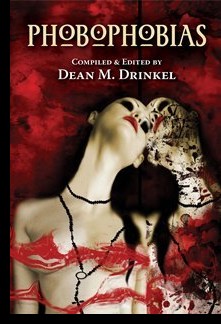 DLS – Following this your short story ‘There Was An Old Man Who Swallowed A Fly’ (aka ‘P is for Pathophobia’) appeared in Dean M Drinkel’s follow-up phobia-inspired anthology ‘Phobophobias’ (2014). The concept and delivery of the story is nothing short of inspired. But the thing that stands out the most is the thick splattering of black comedy that coats the entire tale. Can you tell us a little about writing the short, whether the comedy element came naturally, and how successful you think you were with it?
DLS – Following this your short story ‘There Was An Old Man Who Swallowed A Fly’ (aka ‘P is for Pathophobia’) appeared in Dean M Drinkel’s follow-up phobia-inspired anthology ‘Phobophobias’ (2014). The concept and delivery of the story is nothing short of inspired. But the thing that stands out the most is the thick splattering of black comedy that coats the entire tale. Can you tell us a little about writing the short, whether the comedy element came naturally, and how successful you think you were with it?PS – The story idea itself came from my walking down the road one day and almost swallowing a fly. Write what you know, they say. From there things began ticking over and out came the story of John Hinklow and his misfortunes. And I think this was the start of me finding my voice as a writer. I’d written many failed unconscious pastiches of other writers’ styles before so this was the first one which I would class as my personality on the page. And I guess that’s where the humour comes from, my own wry outlook on the world. And the story needed the humour. Whilst on face value it’s a dark comedic piece, it’s also about isolation from the world, both how we isolate ourselves and how others let us become isolated. John has neighbours in his street but we never see them which is telling in itself. So without that humour it becomes such a bleak piece
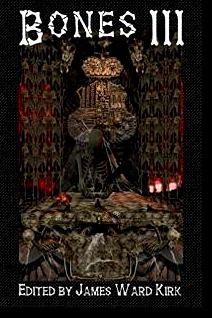 DLS – I must admit, I absolutely loved the short story ‘The Man Who Fed The Foxes’ that was originally published in James Ward Kirk’s ‘Bones III’ (2014) anthology (it’s now been reprinted for the first time in your new ‘Broken On The Inside’ (2018) collection). The story deals with some heart-wrenchingly downcast themes, such as betrayal, loss, mental and emotional deterioration, and ultimately madness. However, it’s with the almost palpable bitterness in the story where it’s able to grab you by the throat and keep the suffocating pressure on. Did you find it difficult conjuring up such powerfully evocative levels of hurt and anger to achieve such a believable amount of pain in order to bludgeon the reader with? Was this always your intention? I almost daren’t ask if it stems from any personal experience…
DLS – I must admit, I absolutely loved the short story ‘The Man Who Fed The Foxes’ that was originally published in James Ward Kirk’s ‘Bones III’ (2014) anthology (it’s now been reprinted for the first time in your new ‘Broken On The Inside’ (2018) collection). The story deals with some heart-wrenchingly downcast themes, such as betrayal, loss, mental and emotional deterioration, and ultimately madness. However, it’s with the almost palpable bitterness in the story where it’s able to grab you by the throat and keep the suffocating pressure on. Did you find it difficult conjuring up such powerfully evocative levels of hurt and anger to achieve such a believable amount of pain in order to bludgeon the reader with? Was this always your intention? I almost daren’t ask if it stems from any personal experience…PS – The reaction to this story has surprised me but in a great way. I’ve always liked the story but struggled to place it initially. As you say, it appeared in Bones III and also had a reprint in Black Shuck Books’ Masks but I don’t think either book found huge readership at the time. It has only been since I put it in Broken on the Inside where I’ve had direct feedback and it’s all been extremely positive in a way I hadn’t dared hope. So a massive thanks for putting a smile on this author’s face.
So, did I find it difficult in terms of evoking the levels of anger and hate? I bottle things up in life. I’ve always been of that school where I put on a brave face and don’t talk about stuff. Crap way to approach life but there you go. I think some people go to the top of the nearest hill or into the middle of the woods and just scream it all out, my writing I suppose is sometimes my equivalent of that except perhaps not quite as dramatic!
In terms of intent, the story was my attempt to write a weird tale. I wanted to have something a little off the wall which is where the foxes came from. The story then grew from there and I guess that’s where I allowed my own personal frustrations to spill out on to the page especially in the living room with the ‘well-meaning’ neighbour.

PS – This was my first and only time where I have approached the subject of rape. Now, Chris, you’ll know, within the story that the rape is hinted at rather than approached graphically. It’s a vile abhorrent act. One that I didn’t want to particularly describe for fear someone may read it and get some sick kick out of it. But what I did want to get into was the punishment. It can’t erase what happened in the story but it can bring retribution. Now there’s a strange thing for me when I’m putting the words down on paper. I get really tied up in all the emotional stuff but writing the violence is the same to me as writing a shopping list. It becomes like describing something in quite a mechanical fashion probably because I know it is fiction, I know that I am in control of what is happening on the page. So that violence doesn’t seem real when writing it, there’s a disconnect, yet reading it back to myself a few weeks later and I’ll often wonder about the stability of the guy with the pen!
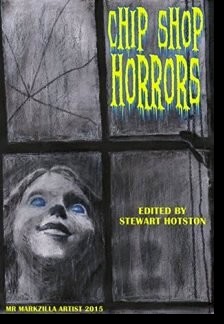
Adding to the story was the easy part as I used to work in a multiplex cinema so a lot of the management stuff, the operational parts, are based loosely on experience. Obviously the more violent and graphic parts of the story came from my imagination rather than any tales from the world of the multiplex!
I do remember reading the opening section at EdgeLit one year and it was this great thing to do as the audience laughed in all the right places and there’s this phrase in the opening about a ‘colonic in reverse’ which received the right level of laughter twinned with squeamish euughs. I did embarrass myself to a degree though by dancing slightly as I sang out the taunt from the food!
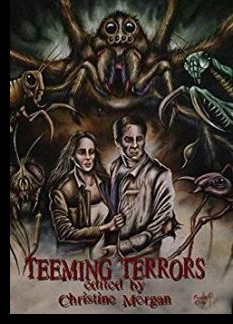 DLS – Next came the publication of your short ‘Hive Mind’ in the ‘Teeming Terrors’ (2015) anthology. This short tale harked back to the glorious days of pulp horror, like a proper ‘old school’ 80s style tale that could easily have come from the likes of ‘Creepshow’ etc. What inspired you to go for such a style of horror, and are you a fan of such 80s pulp?
DLS – Next came the publication of your short ‘Hive Mind’ in the ‘Teeming Terrors’ (2015) anthology. This short tale harked back to the glorious days of pulp horror, like a proper ‘old school’ 80s style tale that could easily have come from the likes of ‘Creepshow’ etc. What inspired you to go for such a style of horror, and are you a fan of such 80s pulp?PS – A book called Teeming Terrors screams out for some old school pulp! I used to love all the old Journey to the Centre of the Earth and The Lost Valley type films growing up as a kid so playing around with bugs in the jungle was something to have fun with. Plus I was also able to sneak a little nod to fellow writer James Everington within the pages which was great. This was another one of those where the story title came to me and then I played around with it. We have a lot of bee boxes and bug houses in the garden so I suppose that is where the term hive mind sprang from. It was also the quickest story I’ve ever written having it started and finished within a three day period to hit the submission window closure. Not something I generally like doing but I obviously did well enough that day.
DLS – The following release from you was your highly-revered novella ‘Becoming David’ (2016). The tale involved a cannibalistic serial killer who’s seemingly being haunted by one of his recent victims. The psychological aspect of the story is what I’d call classic ‘Sloman’, however I’d be interested to hear about the challenges you faced with writing a tale that, from the outset, you would usually expect to be laced with graphic depictions of violence, but instead delivers a more reserved story that chills rather than sickens. Indeed, was this approach a conscious objective for you when writing the tale? And did you find you had to hold back on naturally veering down more gratuitous avenues?
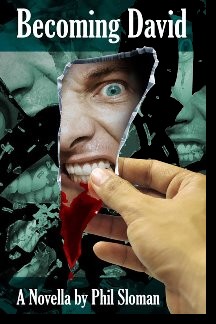 PS – People often comment on the fact there is less gore than expected - although some scenes you definitely wouldn’t read to your kids – and you’re spot on about it being a conscious decision. For me, Becoming David was always about exp
PS – People often comment on the fact there is less gore than expected - although some scenes you definitely wouldn’t read to your kids – and you’re spot on about it being a conscious decision. For me, Becoming David was always about expTherefore the focus for me was on Richard and David, the distinct personalities and how they both changed over time. I think that makes for a more intimate story and hopefully that worked for the reader. In doing that I think I achieved what I wanted, people coming away questioning the essence of what they had read, which aspects were real and which were imagined. I know there have been a few readers coming away pondering the book for days after which I take as a huge compliment.
But I think the biggest challenge was getting people to give a damn about Richard. He’s an uncaring cannibalistic serial killer but also a person you would readily pass in the street and not know any different. He’s a long way from the cultured, charismatic Hannibal Lecter which I wanted to avoid replicating. So taking this dull accountant with a taste for human flesh and having him drive the story, having people root for him when the police come calling, that was the biggest challenge and from the reaction to the novella - having it nominated for a British Fantasy Society Best Newcomer award – tells me that I must have done something right.
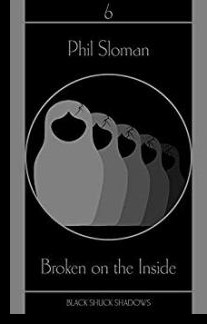 DLS – In your recent short story collection ‘Broken On The Inside’ (2018), two of the tales incorporate emotionally drained principal characters that suffer from blackouts. Is this an affliction you’ve encountered in the real world, and why did you choose to incorporate such a specific ailment in more than one tale?
DLS – In your recent short story collection ‘Broken On The Inside’ (2018), two of the tales incorporate emotionally drained principal characters that suffer from blackouts. Is this an affliction you’ve encountered in the real world, and why did you choose to incorporate such a specific ailment in more than one tale?PS – It isn’t something I’ve ever personally experienced or know anyone who has so that aspect in the stories was me creating the situation and hoping I’d described it properly. In part it’s probably a slightly lazy way to break up the story, to give a natural scene break so I can move things on. However, it also helps to add to the ambiguity for the character and the reader. Particularly with The Man Who Fed the Foxes, just what did happen in that period after he’s blacked out? Obviously all becomes revealed, or at least hinted at, later on.
DLS – Your short story ‘And The Desert Cried Tears’ which was included within the ‘This Twisted Earth’ (2016) anthology was a harsh and bitter tale drenched in sorrow that was very aptly set in the Sahara desert. The story included a mindboggling twist that I guarantee absolutely no one would have seen coming. Did you plan the story in its entirety from the outset, particularly this colossal twist, or did you just leave the tale to tell itself? And where did you get your motivation for the story from?
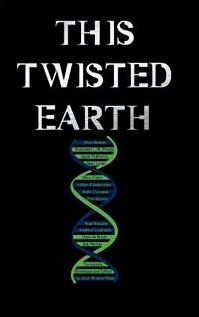 PS – This all comes originally from the brain of my good friend Mr Dion Winton-Polak. The whole This Twisted Earth concept is something he has been playing with for years in his head until he was in a position to get a troupe of authors together to play in his world. The overarching concept is that time has become displaced so you can have Roman gladiators appear in modern day Italy for example. So the time periods merge with each other but the geographical location stays the same rather than those gladiators appearing in the Arctic Circle. It took me a while to get my head around the concept but when I did I realised I needed to create something which created a major juxtaposition. Something, as you say, which would be completely unexpected to find in somewhere like the Sahara. Now the joy is that the Earth has changed so much over the millennia and I’m sure will continue to do so that the plausibility – once you concede these pockets of time shifting – actually works.
PS – This all comes originally from the brain of my good friend Mr Dion Winton-Polak. The whole This Twisted Earth concept is something he has been playing with for years in his head until he was in a position to get a troupe of authors together to play in his world. The overarching concept is that time has become displaced so you can have Roman gladiators appear in modern day Italy for example. So the time periods merge with each other but the geographical location stays the same rather than those gladiators appearing in the Arctic Circle. It took me a while to get my head around the concept but when I did I realised I needed to create something which created a major juxtaposition. Something, as you say, which would be completely unexpected to find in somewhere like the Sahara. Now the joy is that the Earth has changed so much over the millennia and I’m sure will continue to do so that the plausibility – once you concede these pockets of time shifting – actually works. There were two other things which drove the story. One was a plea Dion put out for less Euro/US-centric stories with a lack of diverse characters as well as no more dinosaurs roaming the streets of New York! That got me to thinking about Africa. The second thing was I wanted to tell a sad tale, one of grief but also of love. So there had to be tears and nowhere in the world are tears more precious than in the middle of the desert. So we have the love story of Shola and Ruwa. A little hidden piece in the story is that Ruwa means water in Hausa but also beauty in Arabic which I quite like. From there the backstory all developed and allowed me to merge with that twist you alluded to.
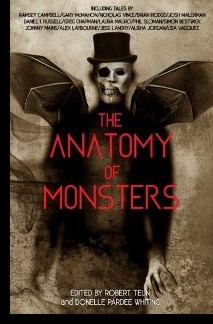 DLS – Your story ‘The Darkness In Our Dreams’ which was included within the ‘The Anatomy Of Monsters’ (2017) anthology told the story of two lifelong friends who come up against the darker side of dreams. I’d be interested to learn what your inspiration was for the story, and your motivations for taking it to such an utterly bleak conclusion. It certainly provokes one hell of a gloomy reaction from the reader.
DLS – Your story ‘The Darkness In Our Dreams’ which was included within the ‘The Anatomy Of Monsters’ (2017) anthology told the story of two lifelong friends who come up against the darker side of dreams. I’d be interested to learn what your inspiration was for the story, and your motivations for taking it to such an utterly bleak conclusion. It certainly provokes one hell of a gloomy reaction from the reader.PS – I was approached alongside a group of other writers to put in stories for this new anthology with the concept of telling the birth of famous monsters such as the Wolfman, the Phantom of the Opera and so on and so forth. We were given free rein to pick a monster and so my brain did what it usually does and picked something a little off-piste, picturing the birth of nightmares given they have haunted us for millennia. So that was the concept but where on earth were nightmares given birth? I used to read a lot of Norse mythology as a kid, though this story is not embedded in that mythology, and it seemed the right thing to place the story in the mists of time in a Scandinavian / Germanic type setting in an isolated village in a mountain valley. And to explore things further I needed two close friends to focus on, Stefan and Dieter, and the peril that they are faced with. It was only as I was writing the piece that I realised the beautiful freedom I had in playing with reality given the dream world available and it was then I knew what I needed to do to tie things up. One of the rarer occasions where I wasn’t sure of my ending at the outset. And that ending was traumatic to pull together. Reading it back now for this interview reminds me just how tough it was to write and for obvious reasons to those who have read it. I don’t really do happy endings.
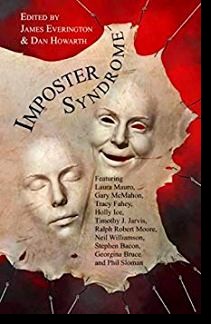 DLS – In your short story ‘Virtually Famous’ (2017) which first appeared within the ‘Imposter Syndrome’ (2017) anthology and was later included within the ‘Broken On The Inside’ (2018) collection, we see a B-List celebrity having a career resurrection thanks to an online virtual reality game that takes a disturbing progression from relatively straight-laced, to downright sick. Where did you get your ideas for this twisted jaunt, and was the social commentary side of the story something that you felt was an important aspect to its final delivery?
DLS – In your short story ‘Virtually Famous’ (2017) which first appeared within the ‘Imposter Syndrome’ (2017) anthology and was later included within the ‘Broken On The Inside’ (2018) collection, we see a B-List celebrity having a career resurrection thanks to an online virtual reality game that takes a disturbing progression from relatively straight-laced, to downright sick. Where did you get your ideas for this twisted jaunt, and was the social commentary side of the story something that you felt was an important aspect to its final delivery?PS – The social commentary aspect was important for me. There’s a lot of my own personal anger and angst bubbling under the surface in Virtually Famous. If you go on social media you’re only a few clicks away from seeing aggressive trolling of people and sadly this sometimes spills into the real world with physical attacks on people. So it was too easy to create a world where people essentially live without inhibitions as nothing seems real behind the anonymity of a screen.
I am also fascinated by the cult of celebrity. This thing where someone famous for pretending to be someone else has millions of people worshipping at their altar, hoping to get a hint of their life. And the world has changed so much in the way we can access the lives of other people that we can only be a few short years away from getting to live a fake life of those society created deities.
The idea for the story itself was something which turned me inside out for weeks. It’s a bit of a brain twister at times. The initial concept was what if someone played themselves in a computer game and that idea then evolved into the celebrity aspect. After that it was drawing out what would happen if said celebrity couldn’t tell the real world from the fake. Now that sounds vaguely simple when you write it down like that but trying to draw all the aspects together, to weave it seamlessly to make sense, I’m pretty sure I lost track of which way was up and which was down at times and I think different readers will interpret the ending in different ways. I know I do and I wrote the blooming thing!
I suppose there’s also an almost murder mystery vibe going on too and it’s no surprise to see Chet’s manager described with a resemblance to Hitchcock in the main room where the ‘here and now’ takes place.
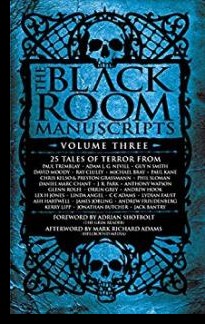 DLS – Your short story ‘Gifts’ which appeared in The Sinister Horror Company’s excellent ‘The Blackroom Manuscripts: Volume III’ (2018) had a decidedly 80’s ‘Pet Semetary’ feel to it. Was this intentional, akin to the Duffer Brothers ‘Stranger Things’? Or was that just how the story came out?
DLS – Your short story ‘Gifts’ which appeared in The Sinister Horror Company’s excellent ‘The Blackroom Manuscripts: Volume III’ (2018) had a decidedly 80’s ‘Pet Semetary’ feel to it. Was this intentional, akin to the Duffer Brothers ‘Stranger Things’? Or was that just how the story came out?PS – This is what I love when other people come back with comments on my stories as there’s stuff in them which I’d never really considered. I remember George Illet Anderson writing a review for this and saying about it being folk horror and when I read that I thought ‘You know what, he’s right’ but I’d never consciously written it in those terms.
Gifts was a story I was looking to find a home for. When the Sinister Horror Company asked me for a story it seemed the perfect place plus the opportunity to help raise a bit of cash for charity. Now I’ll have to put my hand up here and say I haven’t read or watched Pet Semetary but I get the sense of where you’re coming from! In my head the story was about the relationship between the husband and wife and the more supernatural/creature element was a way to drive that to a crunch point. I guess the real inspiration for it is our own cats who come and leave gifts every now and again of a small rodent so the ‘what if’ question came along about something more preternatural doing the same. In my head the creatures look a bit like the monsters in Critters although slightly stretched here and there so I guess that might be where some of the 80s vibe came from.
DLS – And then we come on to the publication of your collection – ‘Broken On The Inside’ (2018). It included a brand new short story ‘Broken On The Inside’ which is a bit of a slowburner, with the real horror in the story coming in the very last couple of pages via a pretty brutal twist ending. In writing short stories of this nature, do you often find that an impactful twist ending like this is almost essential, and when thinking up the idea for such a short, do you often find that you think up the twist ending then work back from there?
PS – That’s exactly the approach I take in general, knowing what the ending is going to be and working it back from there. There were added parts to the ending in Broken, especially the role of the doctor which grew into more than I had originally envisaged, but the essence was right there from the start. I’ve said this elsewhere but I see this, especially with short stories, in the same way a comedian will work out the punchline they’re aiming for and work their joke out from there.
And I always think you need the ending to have something dramatic or shocking about it. I’m not very good at writing happy endings, the ones where everything works out great in the end and everyone lives happily ever after. So I try for the dramatic or the unexpected, something to get the reader thinking after the event. For Becoming David I had the last sentence written before I’d even written the opening paragraph!
The strange thing in writing this way is that you personally know pretty much how your story is going to end so you have no surprise to give you a tingle. Therefore, there’s always the fear that you haven’t achieved the big reveal or you’ve been too abstract in how you’ve laid out your hand that the reader won’t understand what you’ve tried to do. With Broken on the Inside I was convinced that the twist was really obvious but so far I’ve been proven wrong.
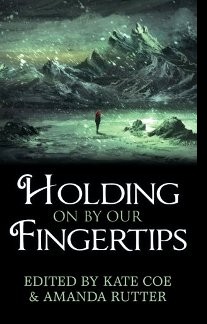 DLS – Recently Grimbold Books have released their ‘Holding On By Our Fingertips’ (2018) anthology which included your short story ‘Dust’. The tale is an emotionally heavy one with a depressing post-apocalyptic backdrop. What drew you to write such a heart-wrenching tale set in such a lonely end-of-the-world setting?
DLS – Recently Grimbold Books have released their ‘Holding On By Our Fingertips’ (2018) anthology which included your short story ‘Dust’. The tale is an emotionally heavy one with a depressing post-apocalyptic backdrop. What drew you to write such a heart-wrenching tale set in such a lonely end-of-the-world setting?PS – The brief was how do people react to the end of the world, that initial point rather than deep into Walking Dead style territory where months or years have gone by. When I was a kid we read and watched Raymond Briggs’ When The Wind Blows as we were in that era when nuclear war was deemed close enough that you needed to teach kids about how to build a fallout shelter and what the blast radius would be if a bomb hit London; I grew up in Sussex and there’s road signs in When The Wind Blows pointing to places local to me then. So that was a big influence on Dust except there was something else I wanted to explore which was the dementia aspect. What happens if someone isn’t fully aware of what’s going on? How does their partner deal with that kind of thing? So Dust is really about the relationship between Lizzie and her unnamed partner and it drained me at times. I always try to put myself into the mind set of my characters and it was far too easy to imagine how things might play out if that were my wife and I in our dotage. And we experienced it to a degree with my grandmother who suffered a stroke. She lived a few years after but there would always be that piece where, in her less aware states, she would sometimes call me by my uncle’s name rather than my own and I’d get that slight clench in my chest.
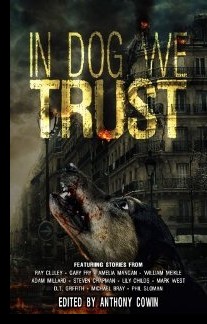 DLS – Even more recently, Black Shuck Books published your short ‘A Dog Is For Death’ within their ‘In Dog We Trust’ (2018) anthology. Your offering is a gritty, gut-wrenching story encapsulating the vile brutality of illegal dog fights. It’s a difficult read, undoubtedly more so for real dog lovers. Did you find it hard to write about the cruelty that’s so graphically depicted in the tale? And did you find it quite therapeutic to reap such a rewarding comeuppance within the story?
DLS – Even more recently, Black Shuck Books published your short ‘A Dog Is For Death’ within their ‘In Dog We Trust’ (2018) anthology. Your offering is a gritty, gut-wrenching story encapsulating the vile brutality of illegal dog fights. It’s a difficult read, undoubtedly more so for real dog lovers. Did you find it hard to write about the cruelty that’s so graphically depicted in the tale? And did you find it quite therapeutic to reap such a rewarding comeuppance within the story?PS – It was hard to write but I think we need to reflect the dark underbelly of society in what we write. If we can’t do that in horror then where else can we? It’s interesting to hear you describe the cruelty as graphically described because it’s something I tried to hint at more, using the reaction of the crowd rather than detailing the fight itself. It was one of the aspects of the story I spent a lot of time on purely because I wouldn’t want anyone to read it and go ‘wow, dog fighting sounds cool’. It’s not. It’s abhorrent. Getting revenge on Beako, the criminal of the piece, was something I had perhaps a bit too much fun with but it was thoroughly deserved. He was a nasty piece of work who got what was coming to him and then some more.
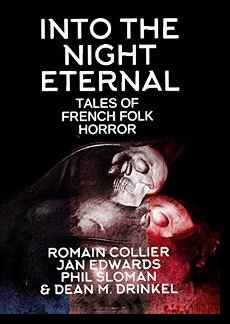 DLS – I understand you have a couple of short stories that are due to be published shortly. The first of these is your tale ‘Les Vacances’ which is due to be included within Western Legends Publishing’s ‘Into The Night Eternal’ (2018). The story reads like a cross between a classic Hammer Horror plot and ‘The Wicker Man’, with a hint of ‘Tombs Of The Blind Dead’ thrown in for good measure. Were you aiming for this sort of vibe, and what was the inspiration behind this decidedly creepy tale.
DLS – I understand you have a couple of short stories that are due to be published shortly. The first of these is your tale ‘Les Vacances’ which is due to be included within Western Legends Publishing’s ‘Into The Night Eternal’ (2018). The story reads like a cross between a classic Hammer Horror plot and ‘The Wicker Man’, with a hint of ‘Tombs Of The Blind Dead’ thrown in for good measure. Were you aiming for this sort of vibe, and what was the inspiration behind this decidedly creepy tale.PS – That’s exactly the vibe I was aiming for and I’m glad it came across as such. The story came about because Dean M Drinkel, the editor for the anthology, asked me to write him a French folk horror story. My first instinct was that I didn’t know how to write folk horror let alone French folk horror. I had a stab at a different story set in France in World War II where a couple of German soldiers are lost in a forest but it simply wouldn’t click for me. And then the penny dropped, I needed to write a Hammeresque story set somewhere in France. I love Hammer films so pulling together the plot was reasonably simple after that. I was then able to weave a lot of my childhood into the story. We grew up on the south coast of England so family holidays often took us to France. One year we went on holiday to the countryside in the south of France and stayed at a gite. I’d have been somewhere in my early teens. There wasn’t a monastery there but a lot of the imagery, both from France and England, come from my own childhood and also experiences later in life.
It was then a case of looking at the fractured nature of Frank and Elizabeth’s relationship as a couple married for twenty plus years and how the interaction with the locals brought out the real them. Plus it was great fun to sketch some witchcraft and superstition into the story as I don’t often get to work in that part of the genre – hopefully I’ve done it justice!
Into The Night Eternal has now come out for Kindle and the paperback should be available any time soon.
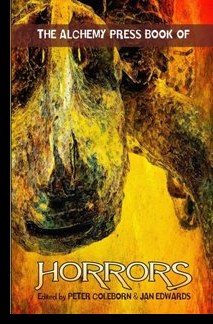 DLS – I believe you also have a story entitled ‘The Girl With Three Eyes’ which is due to included within ‘The Alchemy Press Book Of Horrors’ (2018) anthology later on in the year. The short tale explores the sensitive and sadly topical subject of gun crime in modern day schools, with what I would call a textbook ‘Phil Sloman’ edge to it. Were you nervous about including such a sensitive subject matter in a horror story, and did the ‘Third Eye’ aspect of the tale stem from anywhere or anything in particular?
DLS – I believe you also have a story entitled ‘The Girl With Three Eyes’ which is due to included within ‘The Alchemy Press Book Of Horrors’ (2018) anthology later on in the year. The short tale explores the sensitive and sadly topical subject of gun crime in modern day schools, with what I would call a textbook ‘Phil Sloman’ edge to it. Were you nervous about including such a sensitive subject matter in a horror story, and did the ‘Third Eye’ aspect of the tale stem from anywhere or anything in particular?PS – I was so excited to get an acceptance for this! Alchemy Press had around 400 submissions and to get picked, especially alongside so many legends of the genre, was a great honour.
I wasn’t nervous about writing about gun crime in schools but I’m hoping I got it right. It’s easy for me as a writer to put the words down on the page but there are others out there who have sadly lived it for real. So I guess my approach was to write the story and weave the gun violence into the narrative without glamorising it. The ‘third eye’ aspect came to me because I needed something to represent the paranoia of the protagonist. The concept then built from there, becoming something greater. I guess you could build it up to represent some kind of depiction of how we’re always being watched so maybe I that was something too on a subconscious level.
The Alchemy Press Book of Horrors launches on 20 October at FantasyCon in Chester and there’ll be a whole host of the authors there to do signings.
DLS – Aside from these couple of soon to be published short stories, have you anything else in the pipeline which you can tell us about? What are you working on at the moment and have you any thoughts for future projects?
PS – I recently was involved with a charity anthology called Under The Weather through Burdizzo Books and Back Road Books who published it jointly to raise money for Resources for Autism. My story was called Richard of Cork and involves leprechauns and a young man seeking revenge for the death of his father. The book is out now and available on Amazon.
I’m currently working on a novella called Stanley Sebastian Solomon which is about a bloke paroled into a halfway house and the other inhabitants. It’s an angry story so I drop in and out of writing it as it can be claustrophobic at times plus I’m writing it for me so, with no real deadline, it’s taken far longer than it should. But then I look back at all the stuff I have out this year and realise perhaps why I’ve not got it completed yet!
I’ve also got a chapter to write in a shark themed book but that won’t be for a while as the other writers need to do their thing first. And after that it’s on to getting into the world of writing novels and I’ve a couple of idea fighting to get out on to the page so they should be fun!
DLS – Finally, in these interviews I like to ask people’s top five all time novels. Do you fancy giving us yours?
PS – Crap, just five! Ok, here goes: I Am Legend by Richard Matheson, We Have Always Lived in the Castle by Shirley Jackson, The Wasp Factory by Iain Banks, And Then There Were None by Agatha Christie and House of Leaves by Mark Z. Danielewski. That’s my answer today but it could easily be different if you asked me next week.
Thanks a lot for having me here, Chris. It’s been great fun chatting with you.
DLS - Many thanks for taking the time out to answer all of those questions Phil, and for providing such a wonderful insight into your work, it’s been an absolute pleasure having you over at DLS Reviews.
© DLS Reviews
You can see in-depth reviews of Phil Sloman’s work here:
- Phobophobias (2014)
- Becoming David (2016)
- The Blackroom Manuscripts: Volume III (2018)
- Broken On The Inside (2018)
- The Woods (2019)

